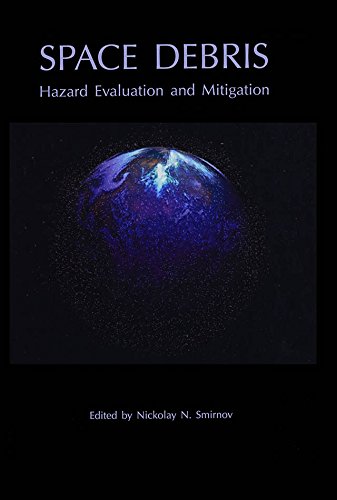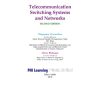(Ebook PDF) Space Debris Hazard Evaluation and Debris 1st Edition by NN Smirnov ISBN 9781482288193 1482288192 full chapters
$50.00 Original price was: $50.00.$35.00Current price is: $35.00.
Space Debris Hazard Evaluation and Debris 1st Edition N.N. Smirnov (Editor) Digital Instant Download
Author(s): N.N. Smirnov (Editor)
ISBN(s): 9781482288193, 1420024167
Edition: 1
File Details: PDF, 77.68 MB
Year: 2001
Language: english
(Ebook PDF) Space Debris Hazard Evaluation and Debris 1st Edition by NN Smirnov -Ebook PDF Instant Download/Delivery:
Instant download Full Chapter of Space Debris Hazard Evaluation and Debris 1st Edition after payment

Product details:
ISBN 10:1482288192
ISBN 13:9781482288193
Author: N.N. Smirnov
When the first sputnik was launched and the space era began, few gave thought to the possible negative impact of putting satellites into orbit. In fact, man’s space activity has led to the formation of a new media named “space debris,” i.e. man-made objects and their fragments launched into space, currently inactive and no longer serving any useful
Table of Contents:
- Chapter 1: Orbital Debris Hazards Assessment and Mitigation Strategies
- 1.1. Space Debris Environment
- 1.1.1. Introduction
- 1.1.2. Space Debris Environment: Low Earth Orbit (LEO)
- a) Debris Measurements
- b) Future Debris Population Estimates
- 1.1.3. Space Debris Environment: Geosynchronous Orbit (GEO)
- 1.2. Collision Hazards
- 1.2.1. Collision Probability
- a) Poisson Distribution
- b) Distance of Closest Approach
- c) Weibull Distribution
- 1.2.2. Breakup Modeling
- a) Debris Cloud Evolution Modeling
- 1.3. Mitigation Strategies
- 1.4. Inter-Agency/International Activities
- 1.4.1. Inter-Agency Activities
- 1.4.2. International Activities
- a) The International Academy of Astronautics (IAA)
- b) The Inter-Agency Space Debris Coordination Committee (IADC)
- c) United Nations (UN)
- 1.5. Summary and Conclusions
- Chapter 2: European Space Agency Activities on Orbital Debris
- 2.1. Introduction
- 2.2. Space Debris Research Activities
- 2.2.1. The Terrestrial Meteoroid and Debris Environment
- 2.2.2. Risk Analysis
- 2.2.3. Debris Protection and Mitigation
- 2.3. Harmonization in Europe and International Cooperation
- 2.4. Conclusions
- Chapter 3: Mathematical Model for Space Debris Evolution, Production and Self-Production
- 3.1. Introduction
- 3.2. Mathematical Model
- 3.3. Marginal Cases Analysis
- 3.4. Some Results of Numerical Investigations
- 3.5. Conclusions
- Chapter 4: The Solution of Applied Problems Using the Space Debris Prediction and Analysis Model
- 4.1. Basic Principles of the Model Construction. The Data on New Yearly Formed Objects
- 4.1.1. Introduction
- 4.1.2. Approach
- 4.1.3. Principles of the Space Debris Environment Forecast
- 4.1.4. The Data on New Yearly Formed Objects
- 4.1.5. Distribution of Parameters of New-Formed Objects
- 4.1.6. General Characteristics of SD Software
- 4.2. Current Space Debris Environment Containing Particles Larger than 0.1 em
- 4.2.1. Introduction
- 4.2.2. Spatial Density Distribution Construction Technique
- 4.2.3. Velocity Distribution Construction Technique
- 4.2.4. Current Spatial Density Distribution
- 4.3. Collisions of Spacecrafts with Debris Particles Assessment
- 4.3.1. A Brief Review of the Used Methods
- 4.3.2. Development of the Technique for Collision Probability Evaluation
- 4.3.3. Characteristics of the Relative Flux of SOs
- 4.3.4. The Probability of Mutual Collisions for a Group of Objects
- 4.4. The Account of Shape and Orientation of Typical Spacecraft Modules
- 4.4.1. Aerodynamic Analogy
- 4.4.2. Determining the Coefficient CN for Typical SC Structure Components
- 4.4.3. Examples of Collision Probability Determination
- 4.5. Forecast of Space Debris Environment
- 4.5.1. General Characteristics of the Forecasting Algorithm
- 4.5.2. Initial Environment and Conditions of the Forecast
- 4.5.3. Example of a Debris Environment Forecast
- Chapter 5: Geostationary Orbit Pollution and Its Long· Term Evolution
- 5.1. Objects Accumulation and Collisions Hazard in GEO
- 5.1.1. Objects Accumulation in GEO
- 5.1.2. Collision Hazard
- 5.2. Breakup Model
- 5.2.1. Momentum and Energy Relations
- 5.2.2. Velocity Distribution
- 5.2.3. Mass Distribution
- 5.2.4. Verification of Assumptions
- 5.2.5. Debris Cloud Evolution
- 5.3. Objects Number Evolution Modeling
- 5.3.1. Evolution Model
- 5.3.2. Parameters and Simulation Results
- 5.4. Necessary Preventive Measures
- 5.4.1. Graveyard Orbit
- 5.4.2. Explosions Control
- 5.4.3. Other Debris Sources
- 5.4.4. Necessary Measures
- Chapter 6: Area/Mass and Mass Distributions of Orbital Debris
- 6.1. Background
- 6.2. A Case in Point: The Fragmentation of Cosmos 1484
- 6.3. Area-to-Mass Ratio from Orbital Decay
- 6.4. Area-to-Mass Ratio for Debris from Laboratory Tests
- 6.5. Mass Distributions for Orbital Debris Objects
- 6.6. Conclusions and Implications
- 6.7. Acknowledgement
- Chapter 7: Space Debris Production in Different Types of Orbital Breakups
- 7.1. Introduction
- 7.2. Physical Models of Breakup Processes
- 7.2.1. The Model for the Energy Release
- a) Combustion of Polydispersed Sprays in Weightlessness
- b) Diffusive Combustion of Hypergolic Propellants in Accidental Mixing of Components on Perforation
- c) Detonation of the Mixture in Propellant Tanks
- 7.2.2. The Model for the Dynamical Deforming of Walls
- 7.2.3. Fragmentation Models for Thin-Walled Containments
- 7.2.4. Fragmentations in Collisions of Debris Particles
- a) Mean Velocities and Energies of Fragments
- b) Number of Fragments
- c) The Minimal Mass of Fragments
- d) Relative Velocities of Fragments
- 7.3. Fragmentation of Shells in Uniform Internal Loading
- 7.4. Breakups Caused by Non-uniform Internal Loading
- 7.5. Fragmentations Caused by Hypervelocity Collisions of Debris Particles with Pressurized Vessels
- 7.6. A Concept for Shield Design
- 7.7. Conclusions
- Annex: Mathematical Models for Dynamics of Multiphase Media and Deformable Structures
- A.1. Turbulent Aows of Multiphase Polydispersed Chemically Reacting Mixtures
- A.1.1. Mathematical Model for the Gas Phase
- A.1.2. Dispersed Phase Modeling
- A.1.3. Auxes from Model Particles and their Recalculation into Gas Phase Equations Source Terms
- A.1.4. Numerical Modeling Techniques
- A.1.5. Nomenclature
- A.2. Mathematical Model for Dynamical Deforming and Breakup of Thin-Walled Elastoviscoplastic Shell
People also search:
space debris 101
space debris ps1
space debris 1957 to 2015
space debris psx
space debris rom
Tags:
NN Smirnov,Space Debris,Hazard Evaluation,Debris


